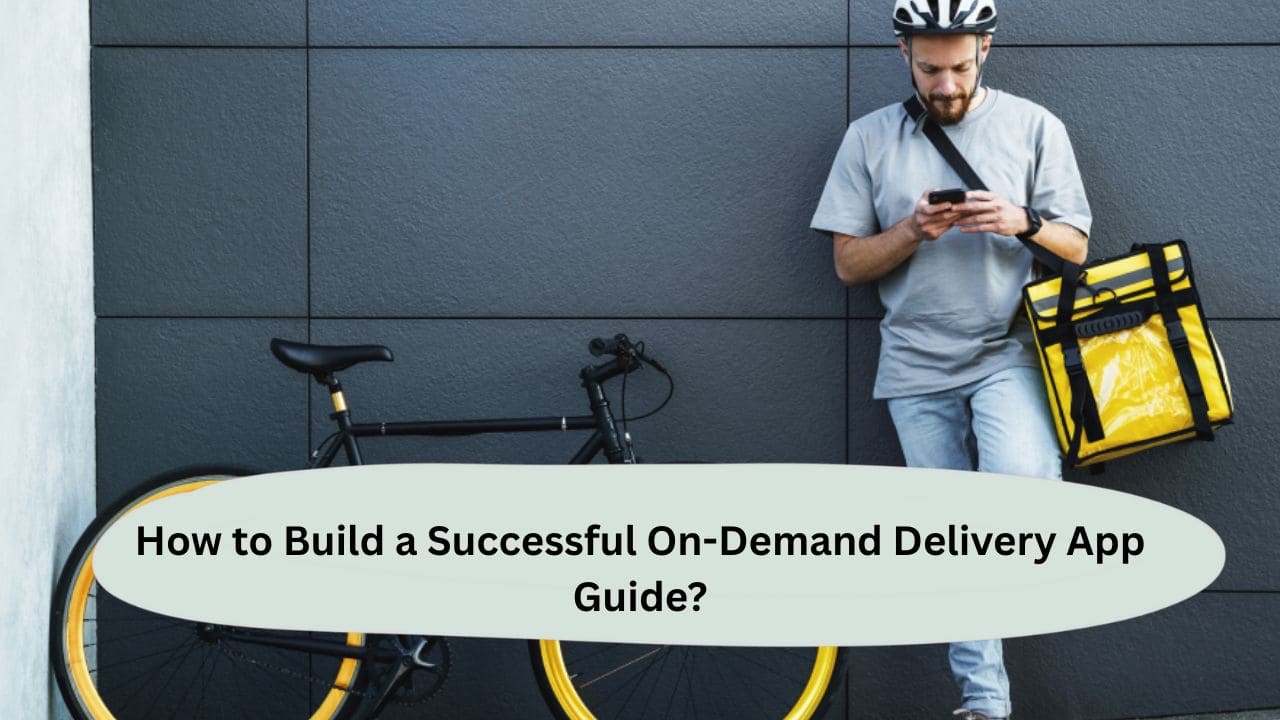I followed the steps in the How to Build a Successful On-Demand Delivery App Guide? and launched my own delivery app in just 4 months — without any coding background. This guide helped me avoid costly mistakes and grow my user base faster than I imagined.
The How to Build a Successful On-Demand Delivery App Guide? isn’t just about building an app — it’s about creating real solutions for real people. Stay focused, keep testing, and you could be the next big success in the U.S. delivery market.
Get ready to discover the exact steps outlined in the How to Build a Successful On-Demand Delivery App Guide?—from your first idea to a fully functioning, revenue-generating app.
What Is an On-Demand Delivery App?
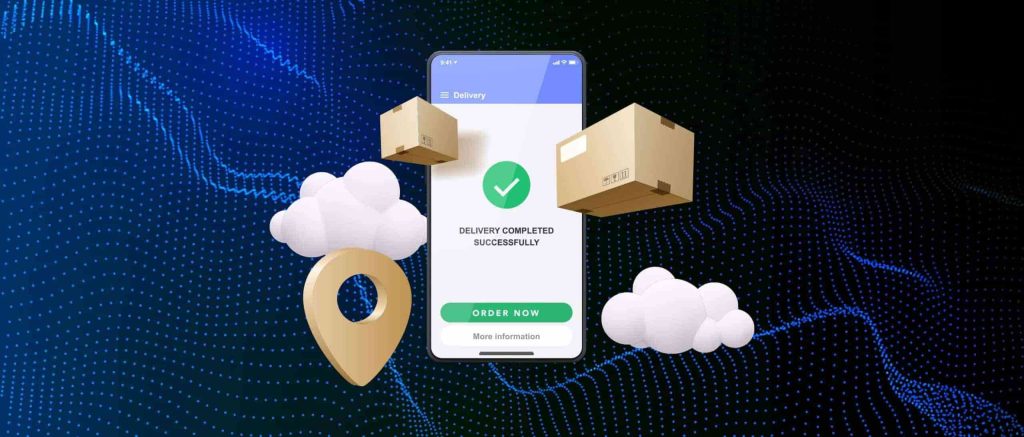
An on-demand delivery app connects users with products or services instantly. Think about ordering food, groceries, laundry services, or even pet grooming — and getting it all delivered to your door in minutes. These apps solve real-world problems by making life faster, easier, and more convenient.
Why the On-Demand Economy Is Booming in the USA
- The U.S. on-demand market hit $200+ billion in 2024.
- Over 55% of Americans now use delivery apps weekly.
- Millennials & Gen Z users prefer convenience over cost.
💡 If you’re thinking about building an app, there’s never been a better time.
Read also: How to hire top mobile app development companies?
What industries can benefit from an on-demand delivery app?
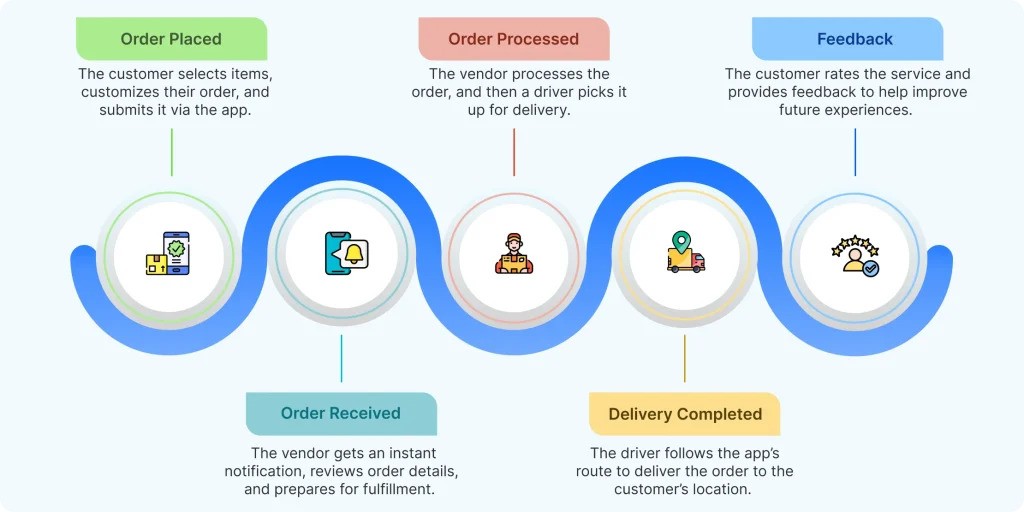
On-demand delivery apps are no longer just for food. Industries like grocery, medicine, e-commerce, and personal care services now thrive using these platforms.
You’ll also see demand in laundry, home services (like plumbers and cleaners), pet care, and even alcohol or cannabis delivery (where legal). Any business that delivers products or services to homes can benefit. The key is to solve a real, local problem with fast, reliable service.
What Are Some Successful Real-World Examples of On-Demand Delivery Apps?
| Company | Industry | Value |
| DoorDash | Food | $35B+ |
| Instacart | Grocery | $12B+ |
| Uber | Ride + Delivery | $90B+ |
These are not just apps — they’re empires. And they all started with a simple idea.
Read also: 5 Ways Digital Custom Software Developers Can Revolutionize Your Business
Step 1: Do Market Research
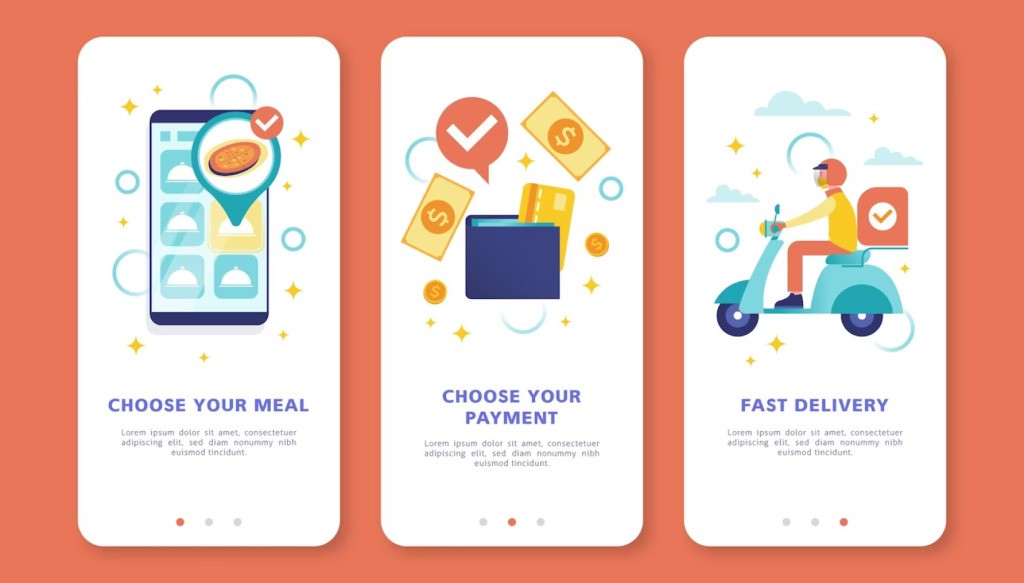
Before building anything:
Understand the demand
- Are people in your area searching for delivery services?
- Use tools like Google Trends or Ubersuggest.
Study your competition
- What features does DoorDash offer?
- What are users complaining about on App Store/Google Play reviews?
Identify your target audience
- Students? Busy professionals? Elderly?
Tip: The more niche your market, the better your chance to stand out.
Step 2: Define Your Business Model
Choose one of these popular models:
- Single Vendor App
For a specific business like a pizza shop or flower delivery. - Multi-Vendor App
Like Uber Eats – customers choose from many providers. - Aggregator
You connect customers with service providers but don’t handle logistics. - Fully Managed Logistics
You handle everything: platform, payment, delivery, and support.
💡 Your business model affects your app’s features, team, and costs.
Step 3: Choose the Right Technology Approach
You have 3 main options:
1. Build from Scratch
- Best for full control.
- High cost but scalable.
2. Use No-Code/Low-Code Tools
- Faster, more affordable.
- Good for MVPs (Minimum Viable Products).
3. White-label Solutions
- Pre-built platforms you rebrand.
- Examples: JungleWorks, Appdupe.
🧠 Choose based on your budget, time, and tech team.
Step 4: Design a User-Friendly App
Good UI/UX is key. Your app should be:
- Simple (Even grandma can use it)
- Fast-loading
- Visually appealing
Use design tools like Figma, Sketch, or hire a designer on Upwork.
Key screens to design:
- Home screen
- Search & filter
- Order details
- Real-time tracking
- Review & rating
Step 5: Develop Essential Features
Here’s a feature checklist:
👤 Customer Side:
- Registration/Login
- Product listing
- Real-time tracking
- Reviews
- Secure payments
Vendor Side:
- Accept/reject orders
- Manage inventory
- Update delivery status
Delivery Partner:
- Receive tasks
- Route optimization
- Delivery status update
Admin Panel:
- Analytics
- User management
- Payouts and refunds
Step 6: Backend Infrastructure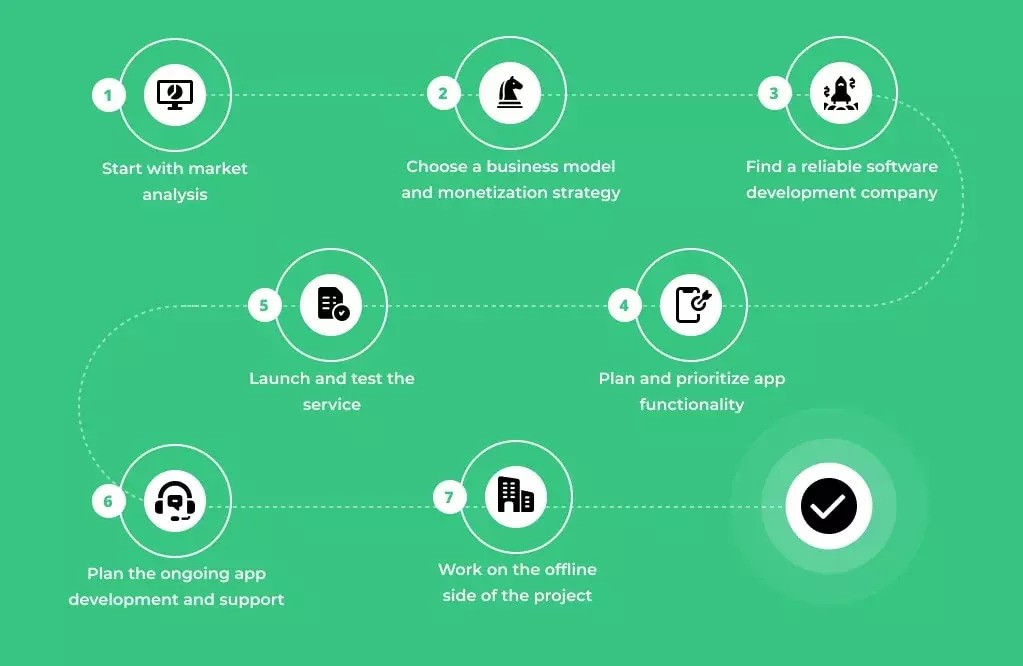
Your backend controls everything.
Must-haves:
- Cloud server (AWS, Google Cloud)
- Database (MongoDB, PostgreSQL)
- APIs (REST or GraphQL)
- Scalable architecture
Hire experienced developers or work with agencies to avoid technical debt.
Step 7: Payment Gateway Integration
Popular options:
- Stripe
- PayPal
- Square
Ensure PCI DSS compliance to protect payment data.
Include wallet options, promo codes, and refund APIs.
Step 8: Real-Time Tracking
Customers LOVE knowing where their order is.
Use:
- Google Maps API
- Mapbox
- Geo-fencing
Benefits:
- Boosts user trust
- Reduces “Where’s my order?” queries
Step 9: Security & Legal Compliance
You’re handling user data. Be responsible.
Include:
- End-to-end encryption
- GDPR/CCPA compliance
- SSL Certification
- Terms & Privacy Policies
Add two-factor authentication and regular audits.
Step 10: Test, Launch, and Improve
Before going live:
- Do QA Testing
- Use Beta Testers
- Monitor bugs with tools like Firebase Crashlytics
Once live:
- Use feedback loops
- Run A/B tests
- Update regularly
How do I get my first 1000 users?
Start by promoting your app locally. Offer discounts, “first order free” deals, or referral bonuses to get people to try it. Use social media ads targeted to your ZIP code, and join local Facebook groups.
Partner with local stores or restaurants that already have customers. Word-of-mouth is powerful — happy users will invite others if you make it easy and rewarding.
Read also: Recognizing the Expectations and Behaviour of Mobile Users
What marketing strategies work best in the U.S. delivery market?
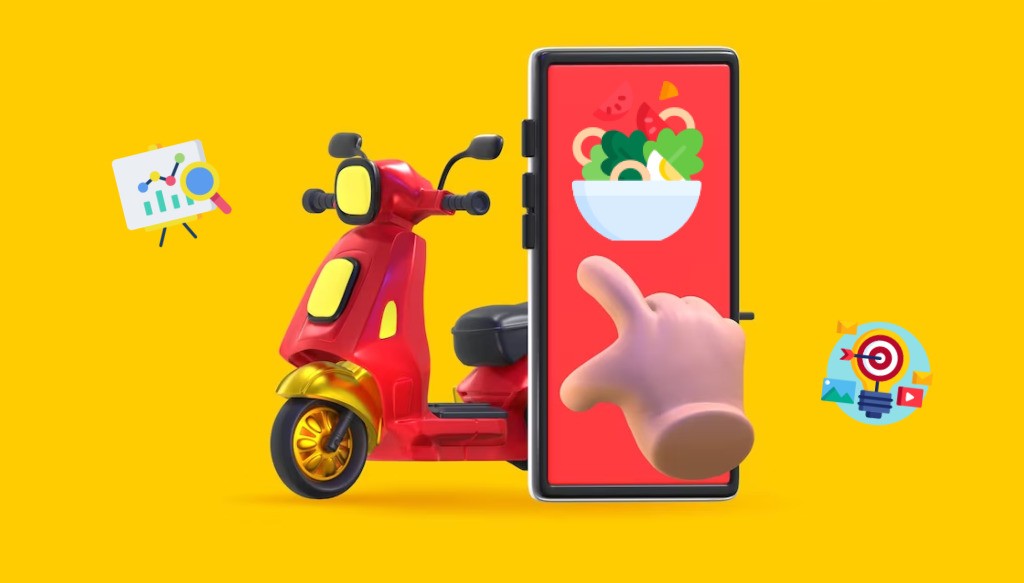
Marketing is the lifeline of any successful delivery app, especially in the highly competitive U.S. market. From local promotions to social media campaigns, using the right strategies helps you attract users, build trust, and grow your brand fast.
Local SEO and Google My Business
Start by claiming your Google My Business listing and optimizing it with keywords, photos, service areas, and reviews. This helps your app show up in local searches like “grocery delivery near me.” Local SEO also includes optimizing your website and app listings with city-specific content.
Influencer Marketing on Instagram and TikTok
Partner with local influencers, food bloggers, or micro-creators who already have the trust of your target audience. Short, fun videos on TikTok or Instagram Reels showing real usage of your app can go viral and bring in hundreds of users quickly.
Referral and Loyalty Programs
Create simple referral codes that users can share with friends for discounts. Offer cashbacks, credits, or free delivery for every successful referral. Also, reward frequent users with loyalty points to increase repeat orders and app engagement.
Hyperlocal Social Media Ads
Run Facebook and Instagram ads targeted by ZIP codes, age, or interests. Ads with limited-time offers, free first delivery, or local event tie-ins perform well. Use catchy headlines and clear calls-to-action (like “Order Now and Save $10”).
Email and SMS Campaigns
Build an email and phone number list from sign-ups. Send promo codes, order updates, or new feature announcements via email and SMS. These direct channels have high open rates and are great for driving reorders and customer engagement.
Community Engagement and Sponsorships
Sponsor local events, college activities, or neighborhood fundraisers. These create brand visibility and trust in tight-knit communities. You can also collaborate with local businesses to cross-promote services.
Should I build a web app or just mobile apps?
Mobile apps are a must-have in today’s delivery market, but don’t overlook the value of a web app. Many users and vendors prefer using desktops for managing orders or dashboards. Your decision should be based on who your users are and how they’ll interact with your platform.
When to Use Each:
- 📱 Mobile App
- Essential for customers and delivery agents.
- Works well for on-the-go ordering and tracking.
- Available offline and sends push notifications.
- 💻 Web App
- Great for admins and business vendors.
- Easier to manage content, inventory, and analytics.
- Ideal for those who prefer larger screens and keyboards.
Read also: Top Mobile First Design Strategies That Transform User Experiences
How Can You Monetize an On-Demand Delivery App?
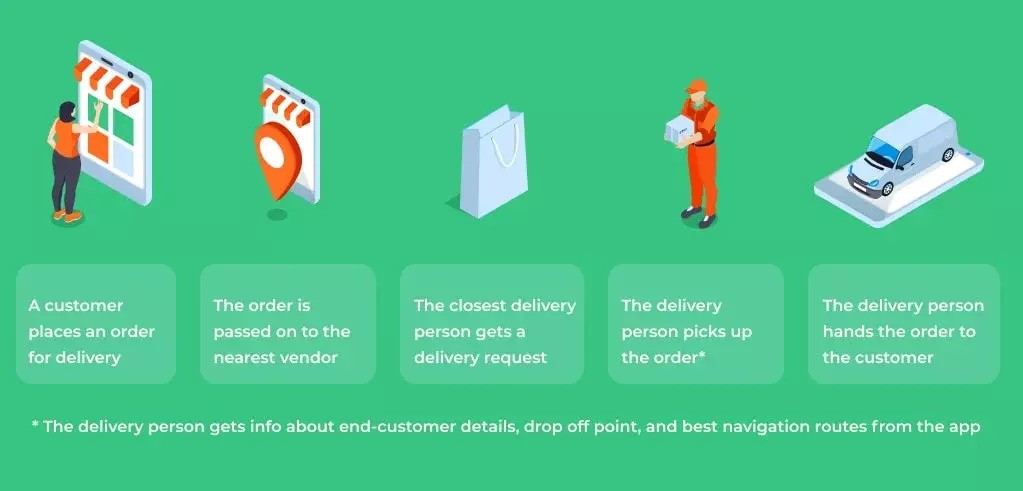
- Delivery Fees
- Subscription Plans
- Commission per order
- Ads & Promotions
- Priority Delivery Charges
How do I scale my app to multiple cities?
Scaling your on-demand delivery app across cities is an exciting milestone. But success depends on having the right systems, partners, and strategies in place. Below are key areas to focus on as you expand into new locations in the U.S.
Use a Scalable Cloud Infrastructure
Make sure your app is hosted on a reliable and scalable cloud platform like AWS, Google Cloud, or Microsoft Azure. This ensures your app can handle more users, data, and orders as you grow without slowing down or crashing.
Create Multi-Region Delivery Zones
Design your backend to support multiple geographic zones. Each city or neighborhood should have its own delivery radius, vendors, and pricing options. This helps you manage logistics more effectively as your coverage area expands.
Automate Vendor and Driver Onboarding
To save time and reduce manual work, automate the process of onboarding new restaurants, stores, and delivery drivers. Use digital contracts, training videos, and profile approvals so you can scale faster without needing a large support team.
Partner with Local Businesses
When entering a new city, partner with well-known local vendors. Their existing customer base will help your app gain traction quickly. You can also co-market with them through flyers, social media, or exclusive promotions.
Customize Marketing for Each City
Each city has its own culture, preferences, and behavior. Create localized ad campaigns, use regional influencers, and customize your offers to fit local trends. This shows you understand the market and builds stronger connections.
Track, Analyze, and Optimize Operations
Use analytics tools like Google Analytics, Mixpanel, or Firebase to track performance in each city. Monitor metrics like order volume, delivery times, and customer satisfaction. Use this data to make city-specific improvements and scale smartly.
Read also: Strategic Ideas for Achieving Perfect Device Compatibility
How do I handle customer complaints or refunds?

Handling complaints properly builds trust and loyalty. Even if something goes wrong, customers will come back if they feel heard and respected. Create a smooth, fair refund and support process inside your app or website.
Best Practices for Complaint Handling:
- 📞 In-app support chat so customers can reach you easily.
- 📜 Clear refund policies shown before checkout.
- ⏱️ Fast response time (within 24 hours is ideal).
- 💬 Empathetic customer service, not just scripted replies.
- 🔄 Follow-up messages to ensure the issue was resolved.
What Common Mistakes Should You Avoid When Building a Delivery App?
- Overbuilding without testing
- Ignoring user feedback
- Poor app speed
- Weak support team
- No marketing plan
Avoid perfectionism – launch fast, improve often.
Read also: Innovative Ways to Implement Cutting Edge Software Solutions for Success
How to build a successful on-demand delivery app?
To build a successful on-demand delivery app, first define your niche—food, groceries, courier, etc. Then conduct market research to identify your target audience and competitors.
Focus on a clean UI/UX design, real-time tracking, and secure payment methods. Incorporate customer support and rating systems for trust. Use agile development for flexibility. Test thoroughly before launch.
How to make an on-demand app?
If you’re wondering how to make an on-demand app?, start by choosing the right tech stack (React Native, Flutter, etc.). Define the core features: user login, order placement, real-time tracking, and payment gateways.
Decide whether to build natively or use cross-platform tools. Hire experienced developers or a reliable agency. Use wireframes to visualize screens. Launch MVP first for feedback.
Which on-demand delivery app pays the most?
Curious about which on-demand delivery app pays the most? Currently, DoorDash, Uber Eats, and Instacart top the list in many regions. Their pay models include base pay, tips, and bonuses.
DoorDash’s “DashPass” incentives increase earnings. Uber Eats offers flexible peak-hour surges. Instacart pays more for large batches. Actual pay depends on your location and hours worked.
How much does it cost to develop an on-demand app?
Wondering how much does it cost to develop an on-demand app? On average, it ranges from $30,000 to $150,000+. The cost depends on the platform (iOS/Android), number of features, and hourly rates of developers.
UI/UX design, backend architecture, and third-party integrations also impact pricing. A basic MVP will cost less. Full-featured apps need more time and budget.
What licenses or permits do I needin the U.S.?

Before launching your on-demand delivery app in the U.S., it’s essential to ensure you have the right legal documentation. The type of licenses or permits you need depends on what you’re delivering, where you operate, and how your business is structured.
Business License
Every delivery app must register as a legal business entity. You’ll need to apply for a business license in the state where you’re headquartered. This legitimizes your operations and allows you to legally hire staff, pay taxes, and sign contracts.
Employer Identification Number (EIN)
An EIN is like a Social Security Number for your business. It’s required for tax filing, opening a business bank account, and hiring employees or contractors. You can get one for free from the IRS website.
Sales Tax Permit
If your app processes the sale of goods — like food, groceries, or retail items — you’ll likely need a sales tax permit. This allows you to collect and remit state sales taxes. Each state has its own process, so check with your local revenue department.
Food Handling Permits (if applicable)
If you’re delivering food, you may need food delivery or food handling permits. These are usually required by local health departments. Depending on your model, restaurants might hold this, or you might need it if you’re storing or packaging food.
Alcohol or Cannabis Delivery Permits
Planning to deliver alcohol or cannabis? You’ll need special state-issued licenses — and laws vary greatly by state and city. For example, California and Colorado allow licensed cannabis delivery, but other states may restrict or ban it.
Commercial Vehicle Registration and Insurance
If you manage your own fleet of delivery drivers, ensure all vehicles are commercially registered and insured. Independent drivers using personal cars may need to inform their insurance providers and possibly upgrade to a commercial plan.
What Are the Best Tips to Stay Competitive in the Delivery App Market?
- Offer faster delivery (30 min or less)
- Give loyalty rewards
- Focus on hyperlocal zones
- Partner with local businesses
- Launch seasonal campaigns
How do I find developers or a development team?
You can hire freelancers from platforms like Upwork, Freelancer, or Toptal for one-time or short-term work. If you want a full team, try agencies listed on Clutch.co or GoodFirms.
Hiring an in-house team gives you full control but costs more. No matter what you choose, check their past work, read client reviews, and interview them thoroughly before signing any contract.
Read also: How to Build a Remote Software Development Team
How do I keep delivery drivers motivated?
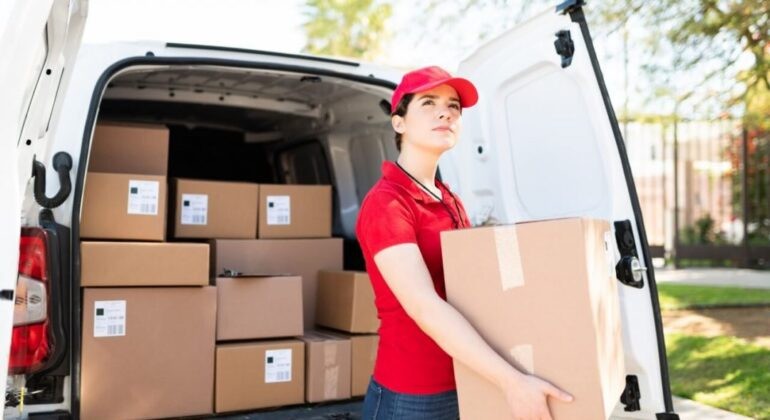
Keeping your delivery drivers motivated is essential for fast, reliable service. Happy drivers perform better, provide better customer experiences, and stick around longer. Offer incentives, flexibility, and clear communication to make them feel valued.
Tips to Motivate Delivery Drivers:
- 💰 Offer competitive per-delivery rates so drivers feel fairly compensated.
- 🎯 Set up performance bonuses for completing high volumes or peak-hour deliveries.
- 📆 Give flexible schedules, so they can choose when to work.
- 🛠️ Provide tools and training like routing apps or customer service tips.
- 🎁 Run monthly contests or rewards for top performers.
FAQs – How to Build a Successful On-Demand Delivery App Guide?
Q1. How much does it cost to build an on-demand delivery app?
Costs range from $10,000 to $100,000+, depending on features and team location.
Q2. How long does development take?
It usually takes 3 to 6 months to build a full-featured app.
Q3. Do I need a tech background?
No. You can hire developers or use no-code tools like Glide or Bubble.
Q4. What’s the best way to market the app?
Use social media ads, Google Ads, and partner with influencers in your area.
Q5. Is it better to use iOS or Android?
Launch on both, but start with Android if budget is tight (larger US market share).
Q6. Can I run a delivery app without my own drivers?
Yes. Use a gig economy model — onboard independent drivers like Uber Eats does.
Final Thoughts How to Build a Successful On-Demand Delivery App Guide?
The How to Build a Successful On-Demand Delivery App Guide? isn’t just about building an app — it’s about creating real solutions for real people. Stay focused, keep testing, and you could be the next big success in the U.S. delivery market.
Read more:
- How Can A Website Be Made Into An App?
- Why is web accessibility important, and what does it entail?
- Expert Strategies for Troubleshooting a Website with Ease
- Strategies to Define Your Objectives and Design Goals

